Water conditions like temperature, turbidity, alkalinity, and pH make it challenging to keep just any fish in a pond. Some fish can only survive in aquariums with controlled water conditions. Therefore, if you own a pond and love the appearance of black fish, you may want to know the ones that can survive in the water.
Here are nine black fish you can keep in your pond:
- Black Goldfish
- Black Sturgeon
- Black Molly
- Black Guppy
- Black Angelfish
- Black Koi
- Black Carp
- Siamese Algae Eater.
There are several species of black fish to choose from if you want to display that particular color in your pond. Let’s take a deeper look at these black fish to understand how they manage to survive and thrive in outdoor ponds.
1. Black Goldfish
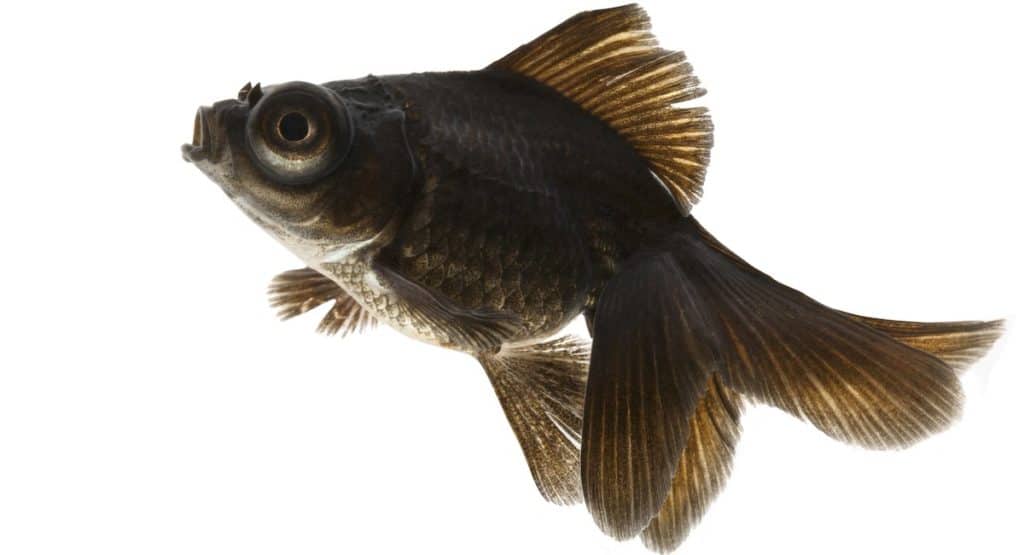
Goldfish is one of the fanciest pet fish species in the world. These fish have a long history of crossbreeding, which is why they come in different varieties, notably fancy goldfish and single-tail goldfish.
Breeders breed specific goldfish to have a black color. Unlike tropical species, goldfish are hardy and can withstand cold water temperatures. Furthermore, they can live in ponds with other fish such as koi and carp.
According to a study by ResearchGate, one of the main features that make it possible for black goldfish to survive in ponds is that they are foragers. They are always looking for food essential for their growth and development. Thus, you don’t have to worry about feeding them, especially in winter.
2. Black Sturgeon

Sturgeons are some of the oldest ray-finned fish in the world, with some species dating back to 70 million years ago. These fascinating fish are related to paddlefish, salmon, and whitefish. Sturgeon can grow up to 14 feet (4.27m) long and 800 pounds (362.87 kg).
Sturgeons are bottom-dwelling fish species that can live in both fresh and saltwater. There are over two dozen species of sturgeon, with some of the most popular being the black sturgeon, lake sturgeon, and shovelnose sturgeon.
The main concerns when keeping black sturgeon fish in a pond is space and filtration. These fish can get quite large, so you need a pond at least six feet deep, over 2641.7 gallons (10,000L), with a sound filtration system.
Although challenging to care for, a sturgeon fish is good if you need a long-living breed. The fish may outlive you because they have a 50 to 100-year lifespan.
3. Black Molly

Mollies are a type of freshwater fish popular in the aquarium trade. There are over 39 species of molly, with the most popular being the black molly.
Mollies are low-maintenance fish that can live in different types of water conditions. They are also good parents who care for their fry. Therefore, you don’t have to be a seasoned fish keeper to keep them healthy.
The main thing to consider when keeping mollies in a pond is their size. Black mollies can grow up to four inches long, so you need a pond at least two feet deep.
You should also provide plenty of hiding places for the fish as they like to have a place to retreat when they feel stressed. Live plants are a good option for providing hiding places and oxygenating the water.
4. Black Guppy
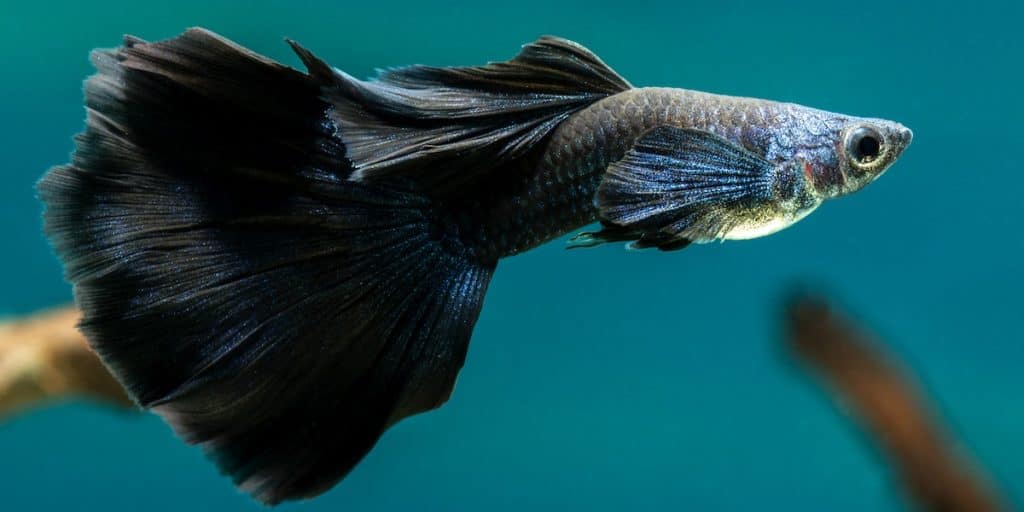
Guppies are the most famous live-bearing fish species in the world. They are also one of the most popular fish for beginner aquarists. Guppies are small, colorful fish that are easy to maintain.
Black guppies are a beautiful addition to any pond. They have a black body with iridescent blue and green scales.
Guppy fish needs enough water (a foot or two) that’s well-ventilated. You may need aerators and a good quality filtration system to maintain water quality.
One crucial thing about Guppy fish is that they are social fish. They need to be in groups to feel comfortable and safe. Besides, having one fish in a pond is unsightly even to you as the owner. Therefore, you should keep at least ten fish together.
5. Black Angelfish
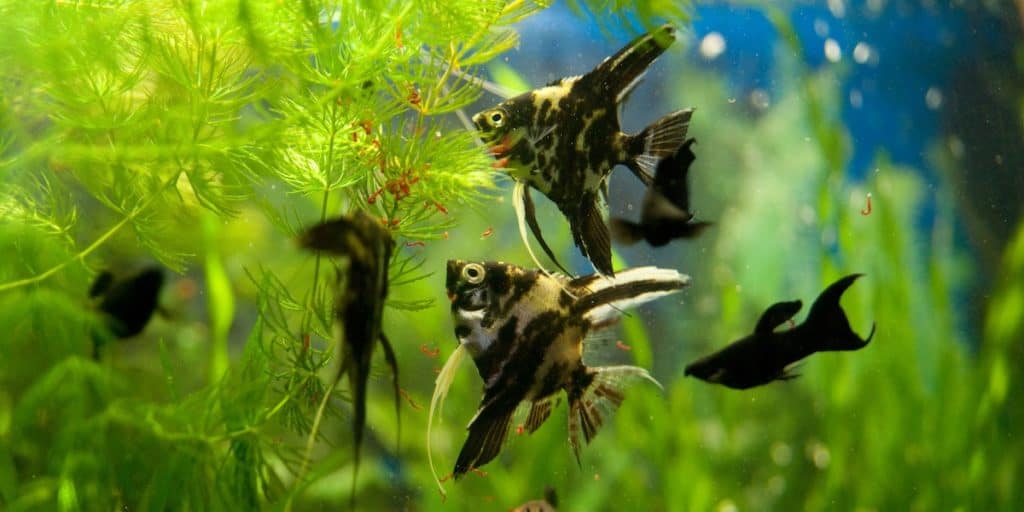
As the name suggests, Black Angelfish are a species of beautiful freshwater fish. They are famous for aquariums and ponds due to their attractive appearance.
Black Angelfish are relatively easy to care for, provided you meet their water requirements. You need an excellent filtration system as they are pretty sensitive to water conditions.
Regarding food, angelfish love insects, daphnia, worms, and larvae. You can also give them high-quality pellets designed explicitly for Angelfish.
Another thing to consider when keeping Black Angelfish is that they need to be in pairs. They are a social species and will not do well if kept alone.
You need to consider size when keeping Black Angelfish in a pond. They can grow up to six inches long, so you’ll need a pond at least five feet deep.
6. Black Koi
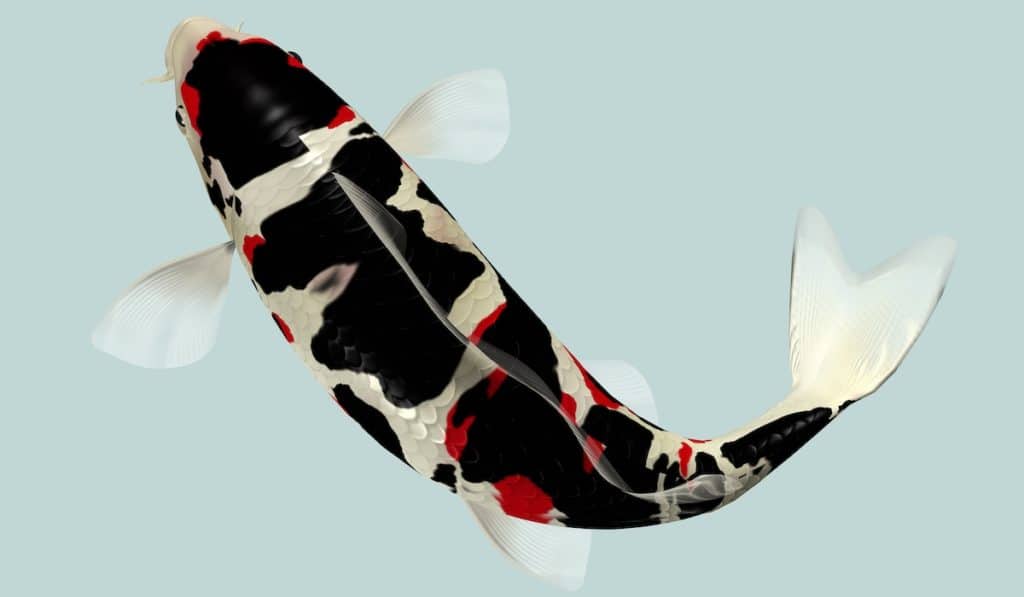
Black Koi are quintessential pond fish. They are large, beautiful fish that come in various colors and patterns. They have a rich history in Japan, and the Japanese consider the koi a national treasure.
It’s easy to confuse koi and goldfish due to their body resemblance. However, Kois are bigger than goldfish and can grow up to 2 feet ( 60.96 cm) long.
Caring for koi fish is a hassle. You must keep their water clean, balanced, and aerated between 24℃ to 26℃ (75.2-78.8℉). However, the effort is worth it due to their natural beauty, and you’ll be happy you did it.
Koi fish are also social creatures and need to be kept in groups. A good rule of thumb is to have one Koi per 15 gallons (68.19L) of water.
7. Black Carp
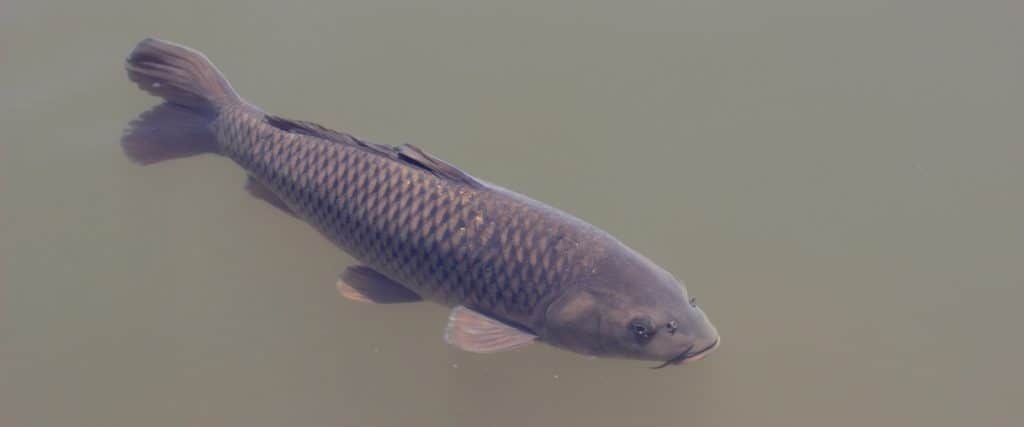
The black carp fish belongs to the cyprinid family. It’s an invasive fish with black scales and a long, slender body.
The black carp is native to Asia, where it’s considered a delicacy. However, people introduced the fish to North America, where it’s an invasive species.
According to the Missouri Department of Conservation, black carp can grow up to five feet (1.52m ) long and weigh up to 160 pounds (72.58 kg).
The Montana Field Guide categorizes black carp as bottom-feeders that prefer slow-moving waters. Some of their primary food include snails, bivalves, and crayfish.
Black carp are considered a threat to endangered fish populations like mussels as they compete for food resources. They also have the potential to destroy habitats by eating the eggs of other fish species. Therefore, it’s advisable not to stock them together with other fish. If you must keep them, ensure they are in a well-sealed pond.
8. Siamese Algae Eater
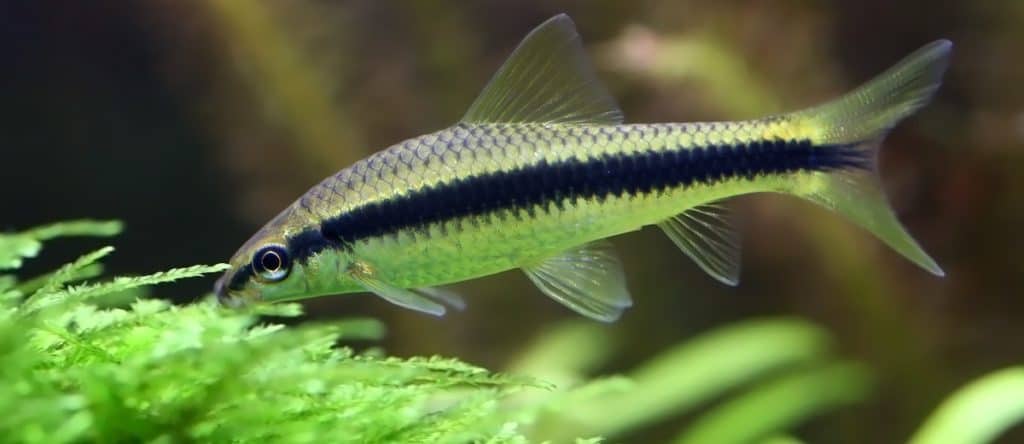
As the name suggests, the Siamese algae eater is an algae-eating fish species that hails from Southeast Asia. These can be one of your pond cleaning crew as they love to eat algae.
Besides eating algae, the Siamese algae eater can also eat mosquito larvae. This diet makes them an excellent choice for ponds prone to mosquito infestations.
The fish is black with a white belly. It has a long, slender body that can grow up to six inches (15.24 cm).
Having at least five fish in a group is essential when keeping Siamese algae eaters. They are social creatures that need the company of their kind to feel comfortable.
It’s also essential to provide them with plenty of hiding spots as they are pretty shy. You can do this by adding aquatic plants or rocks.
Why Are Dikes Essential in a Fish Pond?
Dikes are essential in a fish pond because they sustain the needed volume of water. These features ensure that the pond doesn’t lose water through underground seepage or overflow. Therefore, the design and construction of pond dikes are crucial factors.
An effective pond dike should:
- Resist the water pressure due to the depth of pond water. You can attain this by using strong anchors to keep the dikes on the ground, as the Food and Agriculture Organization of the United Nations discussed.
- It should minimize water seepage by using good-quality clay soil. Alternatively, you can build a cut-off trench in case of a porous foundation.
- Be high enough to prevent water overflow as this can reduce the volume. You can know the right height for your pond based on the depth of the required amount of water.
Frequently Asked Questions
What Is the Most Common Fish in a Pond?
The largemouth bass is the most common fish in ponds. Most people prefer keeping the largemouth bass in their ponds because the fish is easy to maintain and can survive and thrive in outdoor water.
Do Pond Fish Need a Heater?
Pond fish don’t need a heater even in winter because they are adapted to hibernate in extreme weather conditions. When the temperature drops below freezing point, pond fish like goldfish and koi hibernate to preserve their body heat.

